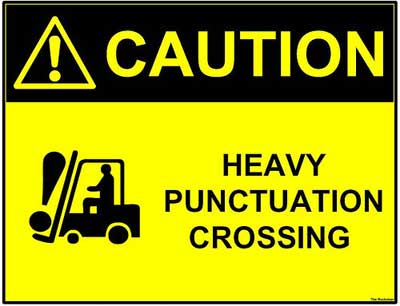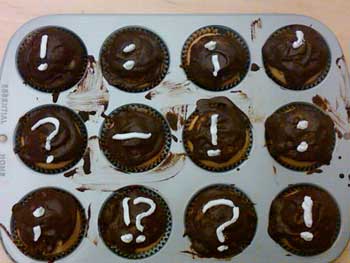
Source: Heavy Punctuation Crossing, the Rocketeer, Flickr
The word punctuation comes from the Latin word punctum, which means point. One of the most common punctuation points is the period. Most of the time, you punctuate your complete thoughts with a period. Other complete thoughts are punctuated with question marks and exclamation marks.
Even though you have been adding periods to your sentences since elementary school, you can still forget to use them in your writing. To solve this problem, print your work to proofread for periods and other punctuation. You may see small errors on a hard copy that are easily overlooked on a computer screen.

Source: Black Hole Rising, czar, Flickr
In this section of the lesson, you’ll review four types of sentences and how to punctuate them. You will be reminded of when to use each type of punctuation mark. Next, you will try your hand as a “terminator” in the activity that follows.
-
A statement is a type of sentence that tells something. Also called a declarative or assertive sentence, a statement shares information with the reader and usually ends with a period.
I had a hamburger and French fries for lunch.
-
A question is a type of sentence that asks something. Also called an interrogative sentence, a question usually begins with who, what, where, when, why, how, or do and ends with a question mark. While question marks are handy for learning things, remember not to use them at the end of indirect questions.
Direct question: Does this punctuation lesson make a point?
Indirect question: I wonder if this punctuation lesson makes a point.
-
An exclamation is a type of sentence that shares a strong feeling such as excitement, happiness, anger, or surprise. Also called an exclamatory sentence, an exclamation is punctuated with an exclamation mark. You should use this punctuation mark sparingly. Mystery writer Elmore Leonard establishes a quota for exclamation marks. He says, “You are allowed only three in every one hundred thousand words of prose.” The more serious the writing, the fewer exclamation points are needed. Like the period, this mark should never be used in duplicate or triplicate.
Punctuation is exciting!
-
A command is a type of sentence that gives a direction or an order to do something. Also called an imperative sentence, a command can be punctuated with a period or an exclamation mark. Imperative sentences, which are useful for giving orders, can often be heard in classrooms. The subject you or y’all is understood in most imperative sentences.

Source: September 24: National Punctuation Day, Adam897, Flickr
Line up.
Please line up!
Be quiet.
Please be quiet!
The following sentences have no terminal punctuation marks. Decide whether each sentence is declarative, interrogative, exclamatory, or imperative. Respond by selecting the appropriate punctuation below each question.

Before you hand in that all-important essay to the teacher, be sure to read each sentence carefully, making sure that each has terminal punctuation. If you want to read more slowly, begin at the end of your essay and read each sentence back to the beginning. Slowing down will allow you to focus on the spelling of each word, and to check for terminal punctuation.